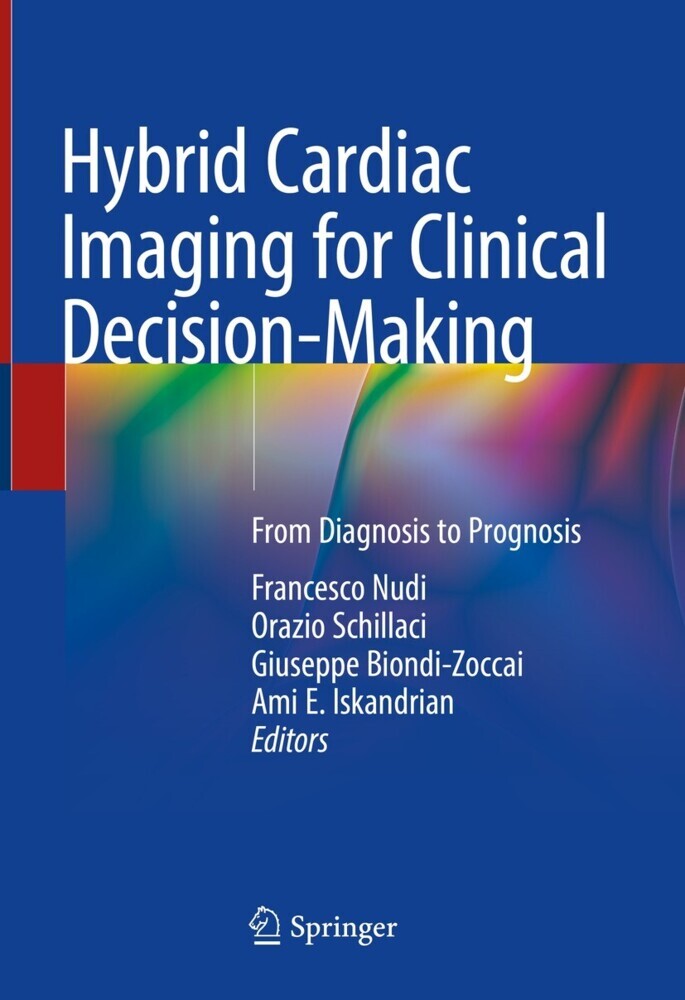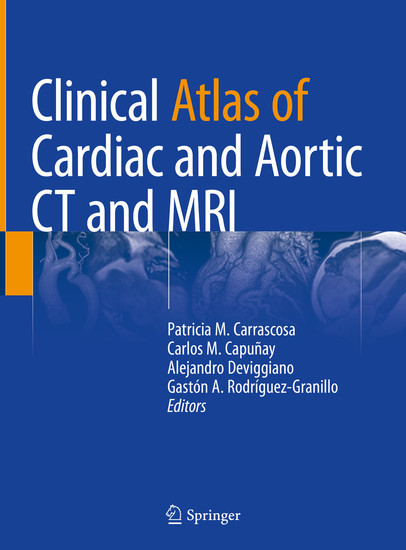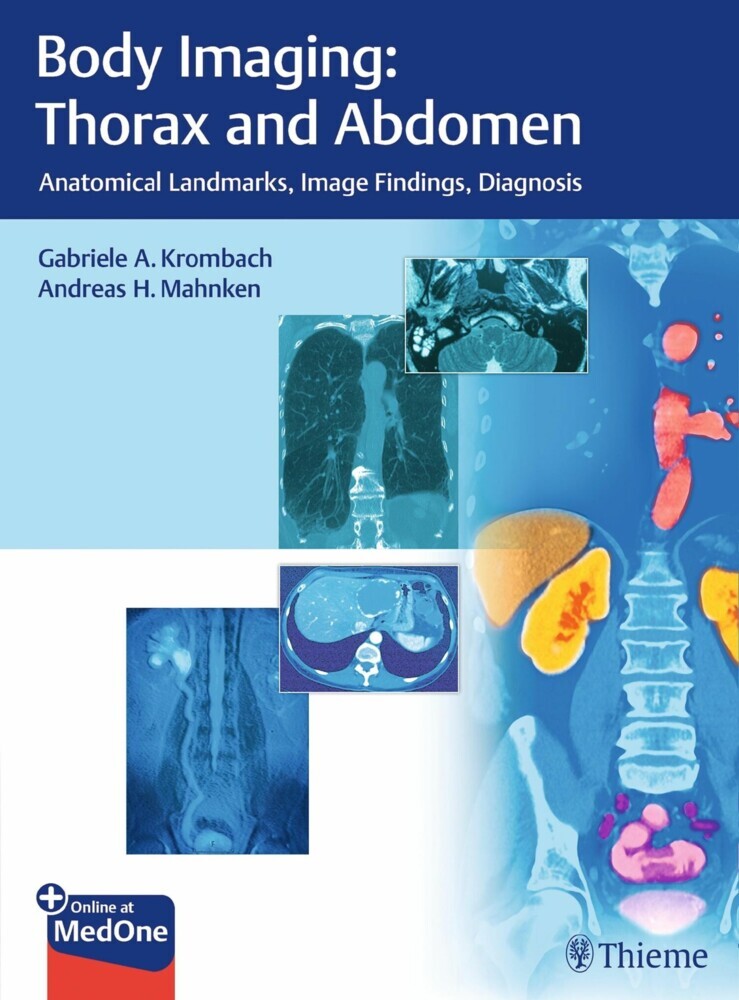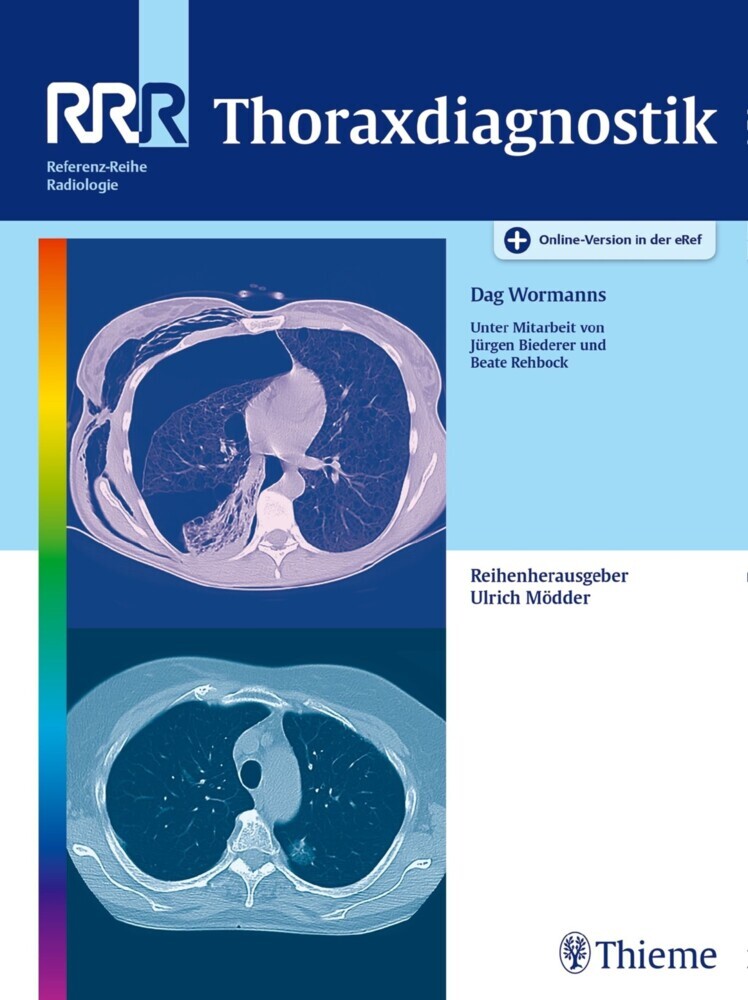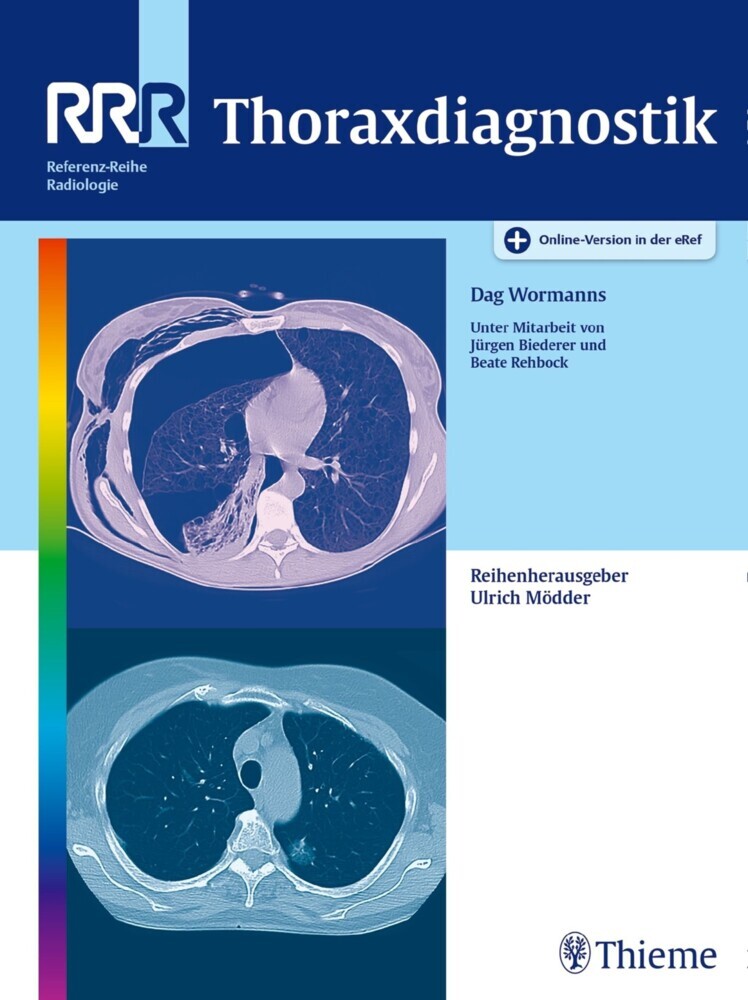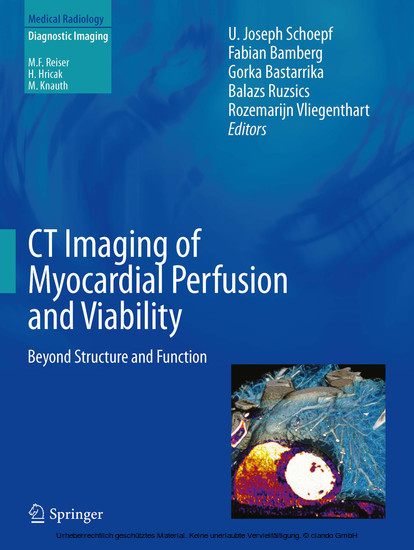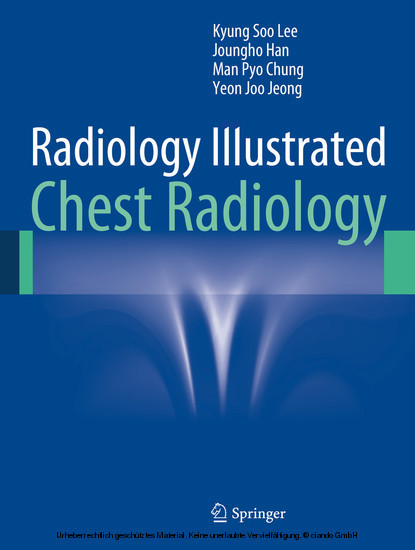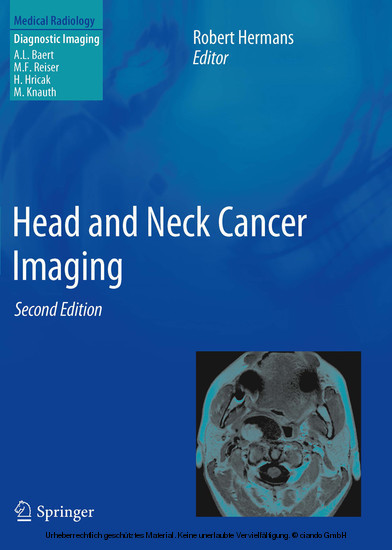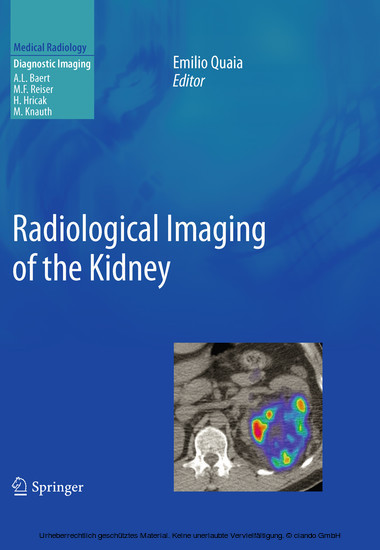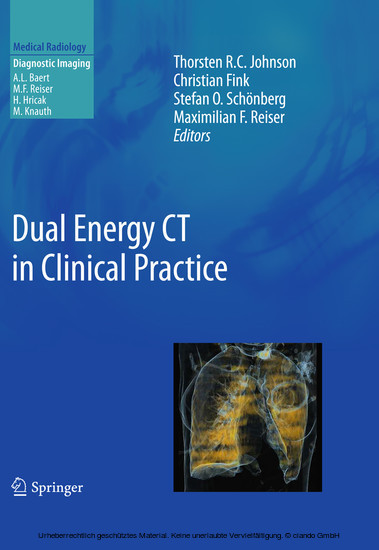Comparative Interpretation of CT and Standard Radiography of the Chest
Comparative Interpretation of CT and Standard Radiography of the Chest
Standard radiography of the chest remains one of the most widely used imaging modalities but it can be difficult to interpret. The possibility of producing cross-sectional, reformatted 2D and 3D images with CT makes this technique an ideal tool for reinterpreting standard radiography of the chest. The aim of this book is to provide a comprehensive overview of chest radiography interpretation by means of a side-by-side comparison between chest radiographs and CT images. Introductory chapters address the indications for and difficulties of chest radiography as well as the technical and practical aspects of CT reconstruction and image comparison. Thereafter, the radiographic and CT presentations of both anatomical variants and a wide range of diseases and disorders are illustrated and discussed by renowned experts in thoracic imaging. The book is complemented by online extra material which provides many further educational examples.
1;Medical Radiology Diagnostic Imaging;1 1.1;Copyright page;4 1.2;Foreword;5 1.3;Preface;6 1.4;Acknowledgements;7 1.5;Contents;8 1.6;Part I Introduction;10 1.6.1;1: Chest Radiography Today and Its Remaining Indications;11 1.6.1.1;1.1 Introduction;12 1.6.1.2;1.2 Main Indications of Chest Radiography;17 1.6.1.2.1;1.2.1 Pneumonia;17 1.6.1.2.1.1;1.2.1.1 Community-Acquired Pneumonia;17 1.6.1.2.1.2;1.2.1.2 Pneumonia in the Immunocompromised patient;17 1.6.1.2.2;1.2.2 The Patient in Intensive Care Unit;19 1.6.1.2.3;1.2.3 Position of Catheters and Thoracic Devices;22 1.6.1.2.4;1.2.4 The Patient in the Emergency Room;24 1.6.1.2.5;1.2.5 The Patient's Follow-Up;29 1.6.1.2.6;1.2.6 Clinical Situations in Which Chest Radiography Has Been Abandoned or Its Role Discussed;29 1.6.1.2.6.1;1.2.6.1 Lung Cancer Screening;29 1.6.1.2.6.2;1.2.6.2 Preoperative Patients;31 1.6.1.2.6.3;1.2.6.3 Daily Routine Chest Radiography;31 1.6.1.3;1.3 Conclusions;32 1.6.1.4;References;33 1.6.2;2: Difficulties in the Interpretation of Chest Radiography;35 1.6.2.1;2.1 Introduction;35 1.6.2.2;2.2 Technique;36 1.6.2.2.1;2.2.1 Exposure;36 1.6.2.2.2;2.2.2 Positioning and Inspiration;36 1.6.2.2.2.1;2.2.2.1 Frontal View Posteroanterior Erect View;37 1.6.2.2.2.2;2.2.2.2 Lateral View;38 1.6.2.2.2.3;2.2.2.3 Other;38 1.6.2.2.3;2.2.3 Image Processing and Post-Processing;38 1.6.2.3;2.3 Interpretation;39 1.6.2.3.1;2.3.1 Knowledge of Anatomy and Physiology;39 1.6.2.3.2;2.3.2 Basic Principles of a Chest X-Ray;40 1.6.2.3.2.1;2.3.2.1 Three Basic Principles;40 1.6.2.3.2.2;2.3.2.2 Threshold Visibility;41 1.6.2.3.3;2.3.3 Analyzing the Radiograph Through a Fixed Pattern;41 1.6.2.3.4;2.3.4 Evolution Over Time;49 1.6.2.3.5;2.3.5 Knowledge of Clinical Presentation, History, and Correlation to Other Diagnostic Results;54 1.6.2.4;2.4 Errors and Perception;55 1.6.2.4.1;2.4.1 Perceptual and Cognitive;55 1.6.2.4.2;2.4.2 Observer Errors;55 1.6.2.5;2.5 Radiologic Report;56 1.6.2.6;References;57 1.7;Part II Technical and Practical Aspects for CTReconstruction and Image Comparison;58 1.7.1;3: The Use of Isotropic Imaging and Computed Tomography Reconstructions;59 1.7.1.1;3.1 Introduction;59 1.7.1.2;3.2 MSCT Spiral Acquisition and Reconstruction;61 1.7.1.2.1;3.2.1 MSCT Spiral Acquisition;61 1.7.1.2.2;3.2.2 MSCT Image Reconstruction;61 1.7.1.2.2.1;3.2.2.1 Slice Thickness, Reconstruction Increment;61 1.7.1.2.2.2;3.2.2.2 The Reconstruction Filter;63 1.7.1.2.2.3;3.2.2.3 Isotropic Imaging;67 1.7.1.2.2.4;3.2.2.4 The Reconstruction Matrix;68 1.7.1.2.3;3.2.3 Postprocessing;70 1.7.1.3;3.3 Dosimetric Aspects of MSCT;73 1.7.1.3.1;3.3.1 Chest CT: A High-Dose Examination?;73 1.7.1.3.2;3.3.2 Dose Modulation;75 1.7.1.4;3.4 Future Perspectives;75 1.7.1.5;References;79 1.7.2;4: PACS - Tips and Tricks for Imaging Comparison;80 1.7.2.1;4.1 Introduction;80 1.7.2.2;4.2 RIS and PACS;81 1.7.2.2.1;4.2.1 RIS;82 1.7.2.2.2;4.2.2 PACS;82 1.7.2.2.2.1;4.2.2.1 Basic Elements of PACS;82 1.7.2.3;4.3 Workstations;83 1.7.2.3.1;4.3.1 Fundamental Functions;84 1.7.2.3.1.1;4.3.1.1 Navigation and Image Manipulation;84 1.7.2.3.2;4.3.2 Advanced Functions;84 1.7.2.3.2.1;4.3.2.1 MPR;85 1.7.2.3.2.2;4.3.2.2 MIP;85 1.7.2.3.2.3;4.3.2.3 MinIP;85 1.7.2.3.2.4;4.3.2.4 Averaging;86 1.7.2.3.2.5;4.3.2.5 SSD;86 1.7.2.3.2.6;4.3.2.6 VRT;86 1.7.2.3.2.7;4.3.2.7 VE;87 1.7.2.3.2.8;4.3.2.8 CAD;87 1.7.2.3.3;4.3.3 Applications (MPR, MIP, MinIP, VRT, and Averaging);87 1.7.2.4;References;94 1.8;Part III Semeiology of Normal Variantsand Diseased Chest;96 1.8.1;5: Semeiology of the Mediastinum;97 1.8.1.1;5.1 Introduction;98 1.8.1.2;5.2 Mediastinal Compartments and Contents;100 1.8.1.3;5.2.1 Anterior Mediastinum;100 1.8.1.4;5.2.2 Middle Mediastinum;100 1.8.1.5;5.2.3 Posterior Mediastinum;100 1.8.1.6;5.3 The Anterior Mediastinal Compartment;101 1.8.1.6.1;5.3.1 Anterior Junction Line;101 1.8.1.6.2;5.3.2 Retrosternal Line or Stripe and Space;103 1.8.1.7;5.4 The Middle Mediastinal Compartment;106 1.8.1.7.1;5.4.1 Aortopulmonary Window on Frontal Films, the Aortopulmonary Str
Coche, Emmanuel E.
Ghaye, Benoit
Mey, Johan
| ISBN | 9783540799429 |
|---|---|
| Artikelnummer | 9783540799429 |
| Medientyp | E-Book - PDF |
| Auflage | 2. Aufl. |
| Copyrightjahr | 2011 |
| Verlag | Springer-Verlag |
| Umfang | 480 Seiten |
| Sprache | Englisch |
| Kopierschutz | Digitales Wasserzeichen |


